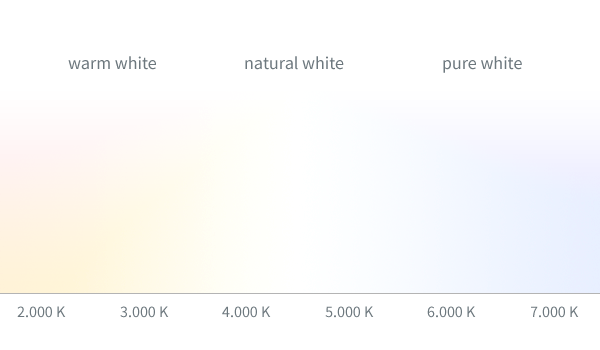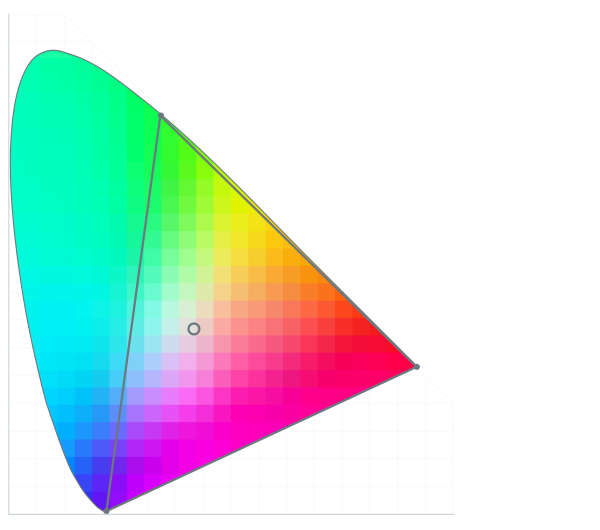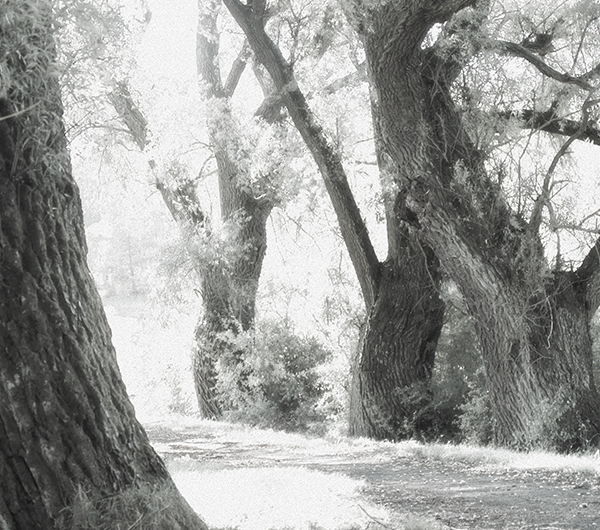White is not simply White. It is a Matter of the Right Temperature.
Very common is the use of white light. The color temperatures pure white (about 6.500 K), neutral white (about 5.600 K) and warm white (about 3.500 K) cover the most applications and therefore are also found in our ring lights.

Color temperatures (simplified display)

CIE chromaticity diagram RGB (simplified display)
Colourful. Coloured light without the use of filters.
In some cases it is necessary to focus on certain wave lengths. Here colured light comes intoplay. Red (625 nm), green (528 nm), blue (470 nm) and also amber (590 nm) enable an increase of the contrast or strengthen the sensitivity of special camera sensors. Where not so many years ago colour filters were needed, now powerful LEDs take over these tasks.
A Different Wavelength. Light in the Invisible Area.
Certain situations require wavelengths, which which are not visible with the human eye. In cases where the visible spectrum of light is undesired, infrared rays can help. A typical result is a photo capture with the so-called Wood Effect. Completely other goals are targeted by UV ring lights with wavelengths of 400 nm, 375 nm or 365 nm. They incite fluorescent substances to glow in the visible area. The best-known application areas are the forensic, however also documentary checks and materials analysis.

Wood effect with infrared filter